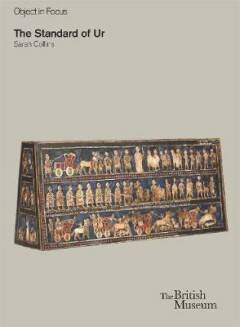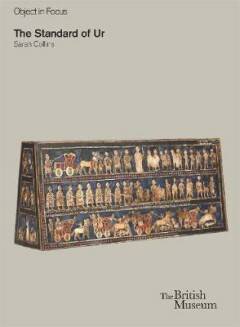
Je cadeautjes zeker op tijd in huis hebben voor de feestdagen? Kom langs in onze winkels en vind het perfecte geschenk!
- Afhalen na 1 uur in een winkel met voorraad
- Gratis thuislevering in België vanaf € 30
- Ruim aanbod met 7 miljoen producten
Je cadeautjes zeker op tijd in huis hebben voor de feestdagen? Kom langs in onze winkels en vind het perfecte geschenk!
- Afhalen na 1 uur in een winkel met voorraad
- Gratis thuislevering in België vanaf € 30
- Ruim aanbod met 7 miljoen producten
Zoeken
Omschrijving
The Standard of Ur is one of the most famous objects to be discovered from ancient Mesopotamia. It was unearthed in a tomb in 1927 by Leonard Woolley during his archaeological excavations of the 'Royal Cemetery' of Ur located in present-day Iraq.
Ur; one of the world's first cities; was highly important politically and economically around 2600-2500 BC when the Sumerian rulers of the city were buried in tombs filled with ornate; valuable objects and with evidence of elaborate rituals and human sacrifice. Without the artifacts from the tombs of Ur it would be very difficult for us today to visualize Sumerian history and know anything about Sumerian art. Of all the objects found in the royal tombs of Ur; the Standard is the most informative yet also the most enigmatic.
The Standard was given its name because it lay in a tomb near the shoulder of a man as if it had been carried like a battle standard. However; its real function and purpose within the tomb is still unknown. It was originally hollow; like a box; and is decorated on four sides with mosaic illustrations created with inlays of shell; lapis lazuli and red limestone that were set into bitumen on a wooden frame. The two main; rectangular sides sometimes referred to as 'war' and 'peace'; show scenes of a battle and of a banquet. Both of these themes; commonly depicted in Mesopotamian art; are shown on the Standard using a narrative technique that was to be used in Mesopotamia for almost two thousand years and can still be appreciated today.
Viewed as a remarkable work of ancient art the Standard testifies to sophisticated Sumerian craftsmanship and the wide trade networks and wealth of the city of Ur. More importantly for us today; it is also a realistic and lively representation of aspects of the life and concerns of people who lived in one of the world's great ancient civilizations during the third millennium BC.
This beautifully illustrated short introduction tells the story of discovery and significance of this splendid object.
Ur; one of the world's first cities; was highly important politically and economically around 2600-2500 BC when the Sumerian rulers of the city were buried in tombs filled with ornate; valuable objects and with evidence of elaborate rituals and human sacrifice. Without the artifacts from the tombs of Ur it would be very difficult for us today to visualize Sumerian history and know anything about Sumerian art. Of all the objects found in the royal tombs of Ur; the Standard is the most informative yet also the most enigmatic.
The Standard was given its name because it lay in a tomb near the shoulder of a man as if it had been carried like a battle standard. However; its real function and purpose within the tomb is still unknown. It was originally hollow; like a box; and is decorated on four sides with mosaic illustrations created with inlays of shell; lapis lazuli and red limestone that were set into bitumen on a wooden frame. The two main; rectangular sides sometimes referred to as 'war' and 'peace'; show scenes of a battle and of a banquet. Both of these themes; commonly depicted in Mesopotamian art; are shown on the Standard using a narrative technique that was to be used in Mesopotamia for almost two thousand years and can still be appreciated today.
Viewed as a remarkable work of ancient art the Standard testifies to sophisticated Sumerian craftsmanship and the wide trade networks and wealth of the city of Ur. More importantly for us today; it is also a realistic and lively representation of aspects of the life and concerns of people who lived in one of the world's great ancient civilizations during the third millennium BC.
This beautifully illustrated short introduction tells the story of discovery and significance of this splendid object.
Specificaties
Betrokkenen
- Auteur(s):
- Uitgeverij:
Inhoud
- Aantal bladzijden:
- 64
- Taal:
- Engels
- Reeks:
- Geïllustreerd:
- Ja
Eigenschappen
- Productcode (EAN):
- 9780714151137
- Verschijningsdatum:
- 25/05/2015
- Uitvoering:
- Paperback
- Formaat:
- Trade paperback (VS)
- Afmetingen:
- 145 mm x 208 mm
- Gewicht:
- 199 g

Alleen bij Standaard Boekhandel
+ 16 punten op je klantenkaart van Standaard Boekhandel
Beoordelingen
We publiceren alleen reviews die voldoen aan de voorwaarden voor reviews. Bekijk onze voorwaarden voor reviews.









